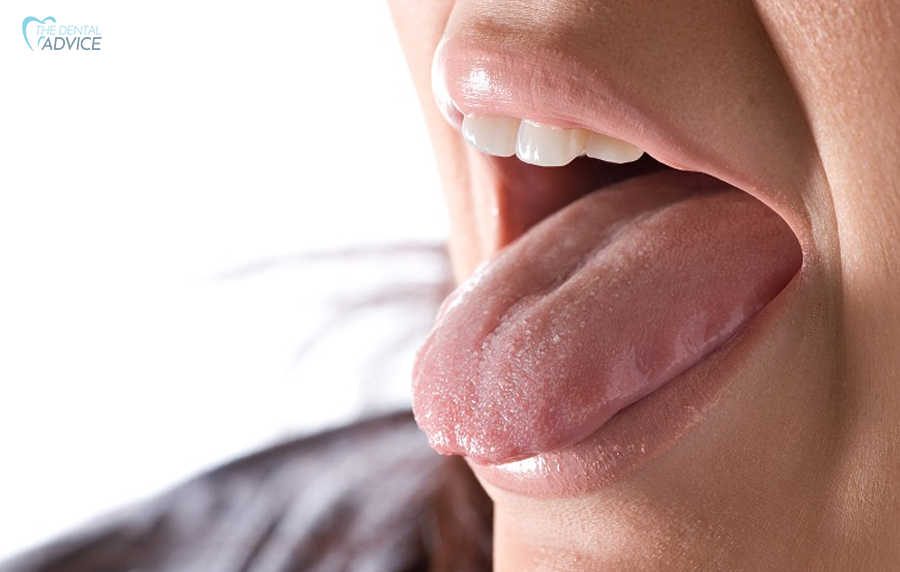The human tongue is a remarkable organ, serving not only as the instrument of taste but also as a medical tool for our overall well-being. This lengthy article delves into the subject of red dots on tongue. When you first see these dots on your tongue, it looks a little different, and you can’t identify the causes of these red dots on your tongue. Is all the red dots on tongue harmful to health? Read through the end and understand all about the red dots on the tongue.
What Tongue Spots Mean?
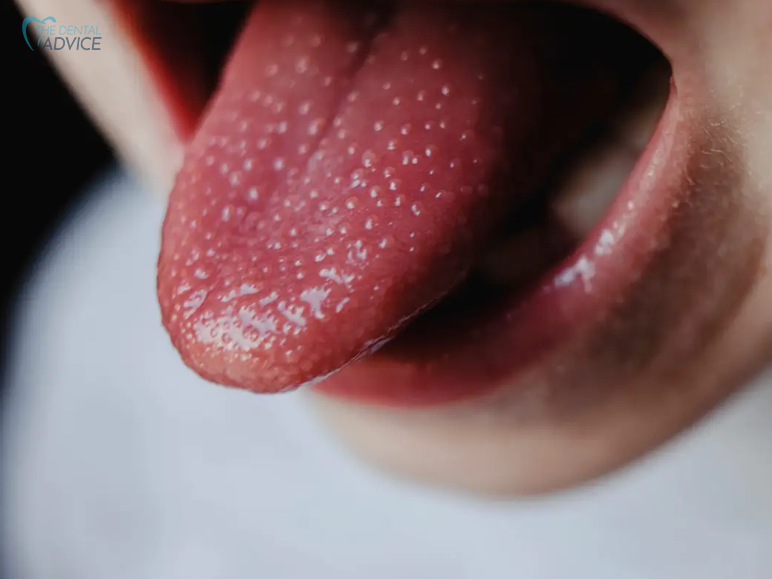
Before we embark on an exploration of atypical tongue spots, it is imperative to establish the standard of a healthy tongue’s appearance. The tongue’s surface is far from uniform; it is adorned with papillae, each type carrying its own significance.
These papillae, little red dots on tongue, are pivotal for our sense of taste as well as for conveying information about food texture and temperature and aiding in speech.
Four Types Of Papillae
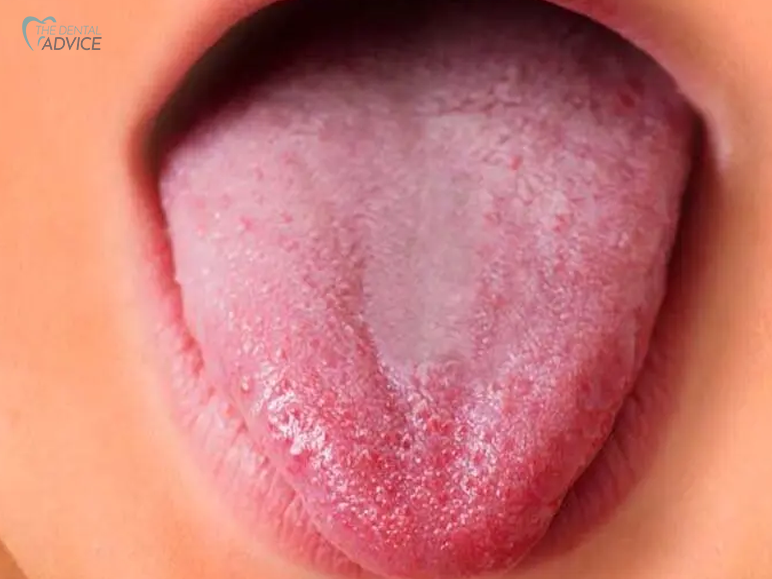
The common reason for red dots on tongue is papillae. Here are the types of papillae which are common causes of red dots on the tongue.
Fungiform Papillae: These petite, mushroom-shaped entities are dispersed across the tongue, with a heightened concentration towards the tip and edges. Remarkably, each has three to five taste buds.
Circumvallate Papillae: These larger formations grace the posterior of the tongue, arranged in a discernible ‘v’ pattern. An individual typically possesses between 7 and 12 of these papillae, each endowed with thousands of taste buds.
Foliate Papillae: Residing on the posterior and lateral aspects of the tongue, a person typically boasts around 20 of these papillae, each cradling hundreds of taste buds.
Filiform Papillae: Predominant in the central and frontal regions of the tongue, these are the most abundant, though curiously devoid of taste buds. They play a pivotal role in temperature perception, mastication, and speech facilitation.
In summation, these resilient papillae orchestrate the symphony of our taste buds, ensuring we relish the myriad flavors presented to us.
Causes Of Unusual Tongue Red Spots
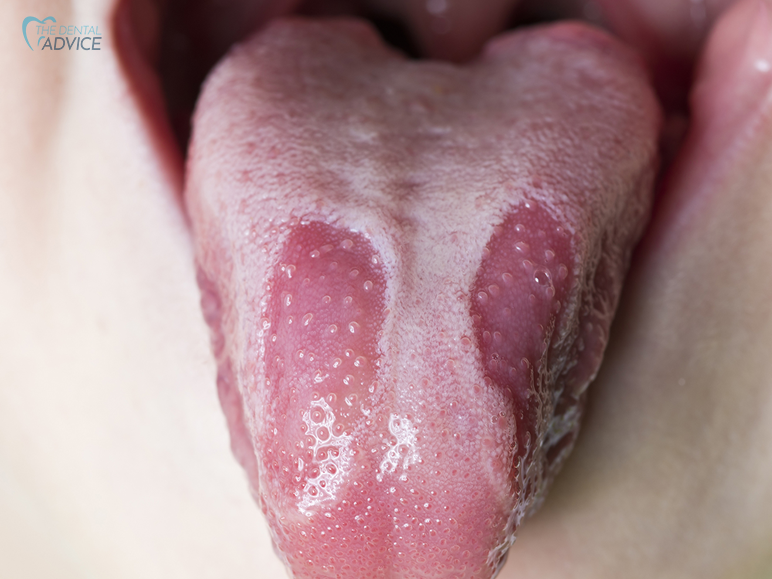
Now, let us unravel the enigma of those intriguing deviations on the tongue’s canvas.
Variations in small red dots on tongue color, size, or appearance may signal an underlying health concern. The following are common perpetrators:
Lie Bumps (Transient Lingual Papillitis)
These are tiny red dots on tongue, or white protuberances on the tongue, often causing discomfort. Typically, they arise from inflamed or enlarged papillae, triggered by factors ranging from tongue injuries to viral infections or psychological stress.
Generally, they resolve autonomously within a week, but if necessary, medicated mouthwash or antihistamines can assuage swelling.
Tongue Burn
Occurring after an encounter with scalding food or beverages, blisters may manifest on the tongue. These are diminutive, fluid-filled entities that can induce pain. Prudence dictates refraining from puncturing these blisters.
Gentle oral care and judicious eating and drinking habits facilitate healing. In most instances, specific treatment is superfluous, but the use of mouthwash can forestall potential infections.
Canker Sores
These ubiquitous ulcers, typically white or yellow in hue, may emerge on the tongue, within the oral cavity, or even on the lips.
While their exact etiology remains elusive, they tend to recede without external intervention. Over-the-counter preparations to treat the red dots on tongue, such as benzocaine, offer respite from discomfort.
Geographic Tongue (Benign Migratory Glossitis)
This peculiar condition engenders red spots on the tongue, bordered by a white periphery. While its exact origins remain uncertain, stress, allergies, or diabetes may be contributory factors.
Encouragingly, it seldom induces additional symptoms and generally convalesces autonomously, without necessitating treatment.
Oral Yeast Infection (Thrush)
This yeast infection can affect the mouth and tongue, resulting in red dots on tongue, white spots, bumps, or patches. It is often accompanied by an unpleasant taste and oral soreness. Thrush arises from an overgrowth of naturally occurring yeast.
Specific cohorts, such as newborns, diabetics, or individuals employing corticosteroid inhalers, are more susceptible. Over-the-counter antifungal agents generally prove efficacious, although additional measures, like altering dentures or medication, may be advised.
Scarlet Fever
Primarily afflicting the nasal and throat regions, scarlet fever manifests with a distinctive red, bumpy tongue often likened to a “strawberry tongue.” Additional symptoms encompass a sore throat, fever, a rash, headache, and abdominal discomfort.
Antibiotics serve as the cornerstone of treatment, typically affecting resolution within a week, though the rash may endure. It is imperative to note that scarlet fever is communicable and may be transmitted via coughing, sneezing, or contact with contaminated objects.
Oral Allergy Syndrome
Allergic reactions to specific raw fruits and vegetables can precipitate itching and swelling in the mouth or on the tongue. Swollen patches on the tongue may appear reddened and irritated.
The reaction is generally mild and can be averted by avoiding trigger foods. Employing culinary techniques such as cooking or peeling can mitigate the likelihood of a reaction.
Tongue Cancer
Finally, we must address the grave concern of tongue cancer. A persistent bump or spot on the tongue, especially one that endures, warrants attention as a potential indicator.
Additional symptoms to be vigilant for include a protracted sore throat, difficulty swallowing, and oral numbness.
If confronted with a painless sore, lump, or red or white patch on the tongue, seeking the counsel of a dentist or physician is imperative for a thorough evaluation.
When To Seek Medical Attention?
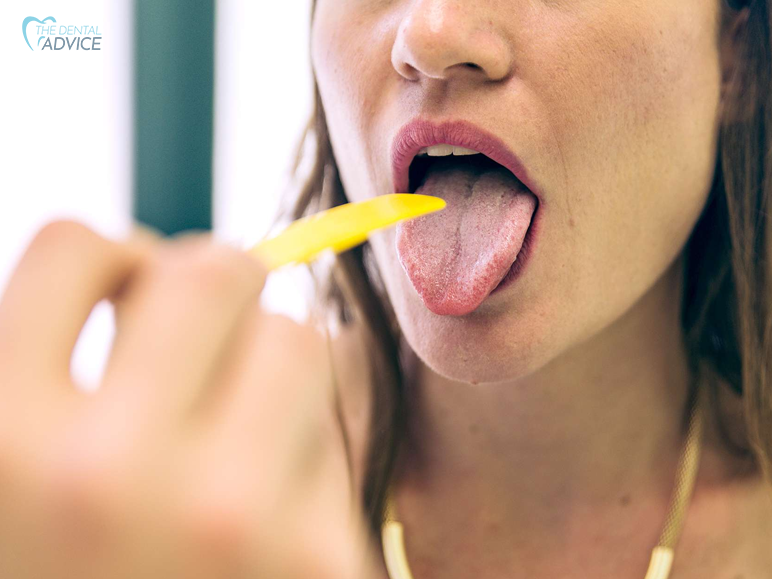
While not all tongue spots necessitate immediate concern, vigilance is warranted in certain instances. Consult a healthcare professional if any of the subsequent scenarios come to pass:
- Unusual red dots on tongue that persist beyond a week
- Spots that exhibit bleeding, heightened pain, or progressive expansion.
The attending healthcare provider will likely inquire about associated symptoms, onset timing, and any discomfort experienced. This data is invaluable in facilitating a diagnosis and prescribing the requisite guidance or treatment.
Prevention Tips For A Healthy Tongue

Preserving impeccable oral hygiene constitutes the linchpin for preventing oral yeast infections and expediting recovery post-injury or illness. To uphold the well-being of your mouth, teeth, and tongue, consider the ensuing practices:
- Brush your teeth biweekly.
- Engage in daily flossing.
- Curtail consumption of sugary foods and beverages.
Although it is not always feasible to preempt all forms of red dots on tongue, especially those arising from infections or canker sores, steadfast adherence to proper medication usage, oral hygiene, and avoidance of irritants during consumption and oral care endeavors can expedite healing and obviate the recurrence of spots.
In Summation

The human tongue transcends its role as a mere tastebud repository; it serves as a litmus test for our vitality. Those spots adorning your tongue, while frequently innocuous, occasionally harbor implications for underlying conditions. Foremost, if any unusual red dots on tongue endure, seeking professional counsel is the most judicious course of action.
Remember, a robust tongue not only augments our gustatory pleasures but also contributes indispensably to our holistic well-being. Let us, therefore, strive to maintain tongues in their optimal state!
Also Read:

